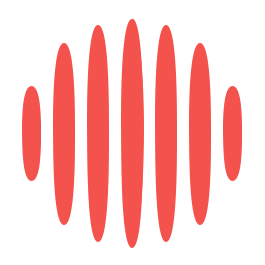Footfall data is something that has been around for a while now. But what do we mean by footfall?
This kind of dataset has changed depending on the use case and industry.
In fact, footfall has moved beyond simply measuring the number of people that enter a location.
We’ll take you on a deep dive into footfall data. We’ll show you what it is with detailed examples, as well as what it can be used for across many industries.
What is footfall?
Before we look at footfall data, we need to explain what footfall is.
For us, we have always defined footfall as:
The way that a group behave and move in the real world.
This explains the who, what, when and why of how this group of people visit a location.
This could be different for each business.
But mainly footfall can tell you:
- Trends around behaviour
- Changes in demographics
- Visits to real-world locations
- Anonymised data trends
Essentially footfall means understanding how people move and behave in the real world.
So what is footfall data, and what does it look like?
Footfall data is sometimes referred to as foot traffic data. It’s a data set that will usually contain a number of entries.
The dataset as a whole will signify a number of visits to a real-world location.
These are aggregated and delivered in a few different ways.
Aggregated visits to a location
This will be a data set in which the number of visits to a location is aggregated. This is usually done by some kind of time window, such as hourly, daily, weekly or monthly.
Individual visits to a location
Similar to the above, but this time each row will signify a visit to a location. This will usually come with a timestamp and will be up to the person receiving the data to aggregate the data as they wish.
Characteristics of visitors at a location
In this dataset, the visits to a location are overlayed with demographics data to understand the calibre of person visiting the chosen location.
Comparisons of visitors to a location
This dataset will contain a comparison between two locations based on the desired metric. This could be demographic or an hourly number of visits.
Where is footfall/foot traffic data generated from?
These datasets can come from a myriad of sources. It’s important that you understand where your footfall data is generated from, as this can affect its accuracy. The most common sources are as follows:
Geospatial/Location data
Data is usually generated from a mobile device. This is collected and aggregated to protect user privacy. A good amount of versatility as a single data set can be used to measure visits to numerous locations. A good balance of scale and accuracy.
Sensory data
These are usually physical sensors that are placed in entrances to stores. Very accurate but limited mainly to retail and requires stores to install physical tech, so not very scalable.
Datos de compra
This kind of footfall data involves taking payment data to understand changing traffic in stores. It can be scalable but is not very accurate. This is mainly due to the fact that you are measuring purchases as opposed to visits.
How can footfall data help my business?
Traffic and movement trends
One of the main use cases for footfall data is for understanding changing traffic and movement trends.
These kinds of insights are valuable for businesses that are interested in physical locations.
Examples of this use case are:
- A retail location understands the changing number of visitors to its location. This could be a store or a real estate planner.
- A city planner understands macro visits changes to plan infrastructure.
- Financial companies looking to identify trends in behaviour for investment purposes.
- OOH media owners measure how many people have seen their ads.
Visitor demographics
As mentioned, with overlapping datasets, it’s possible to show the demographic of visitors to locations. These demographics are features such as age, gender, interests.
This use case traditionally sits more on the side of marketing and advertising.
Example use cases are:
- Marketers target consumers who have visited a real-world location.
- Building lookalike audiences in advertising platforms.
Competitive analysis
This is similar to our first use case, but the target location will typically be a competitor.
Examples of this use case are:
- A store measures competitors’ traffic to target them with advertising.
- A new site planner understands competitive performance to decide where to open a new site or venue.
Training ML
Footfall data can also be used to train emerging ML models. These models are being used to power new tools that can help solve problems in the real world.
Examples of this use case are:
- Predictive insights into footfall
- Complex financial predictions
Example of footfall data
Get started with best-in-class footfall data today.
James es el jefe de marketing de Tamoco

